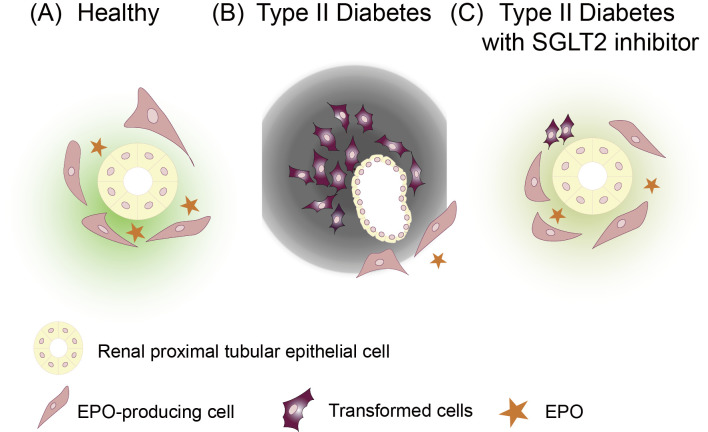Figure 1.
Transformed cells in T2DM patients are reverse-transformed by SGLT2 inhibitors, subsequently regaining the phenotype of normal EPO-producing cells. (A) EPO-producing cells are localized around the proximal tubule in the renal cortex. (B) The renal proximal tubular epithelial cells in T2DM patients are exhausted by the task of relentless excess sugar reabsorption. With the increase in the oxygen consumption by renal proximal tubular epithelial cells, the stroma becomes hypoxic, and an inflammatory microenvironment sets in. The EPO-producing cells undergo transformation, lose their ability to produce EPO, and instead secrete a large amount of extracellular matrix proteins, such as collagen. (C) SGLT2 inhibitors improve the interstitial microenvironment by reducing the oxygen consumption of renal proximal tubular epithelial cells. Transformed cells in T2DM patients are reverse-transformed by SGLT2 inhibitors, subsequently regaining their EPO-producing ability. T2DM: type 2 diabetes mellitus, SGLT2: sodium glucose cotransporter 2, EPO: erythropoietin

